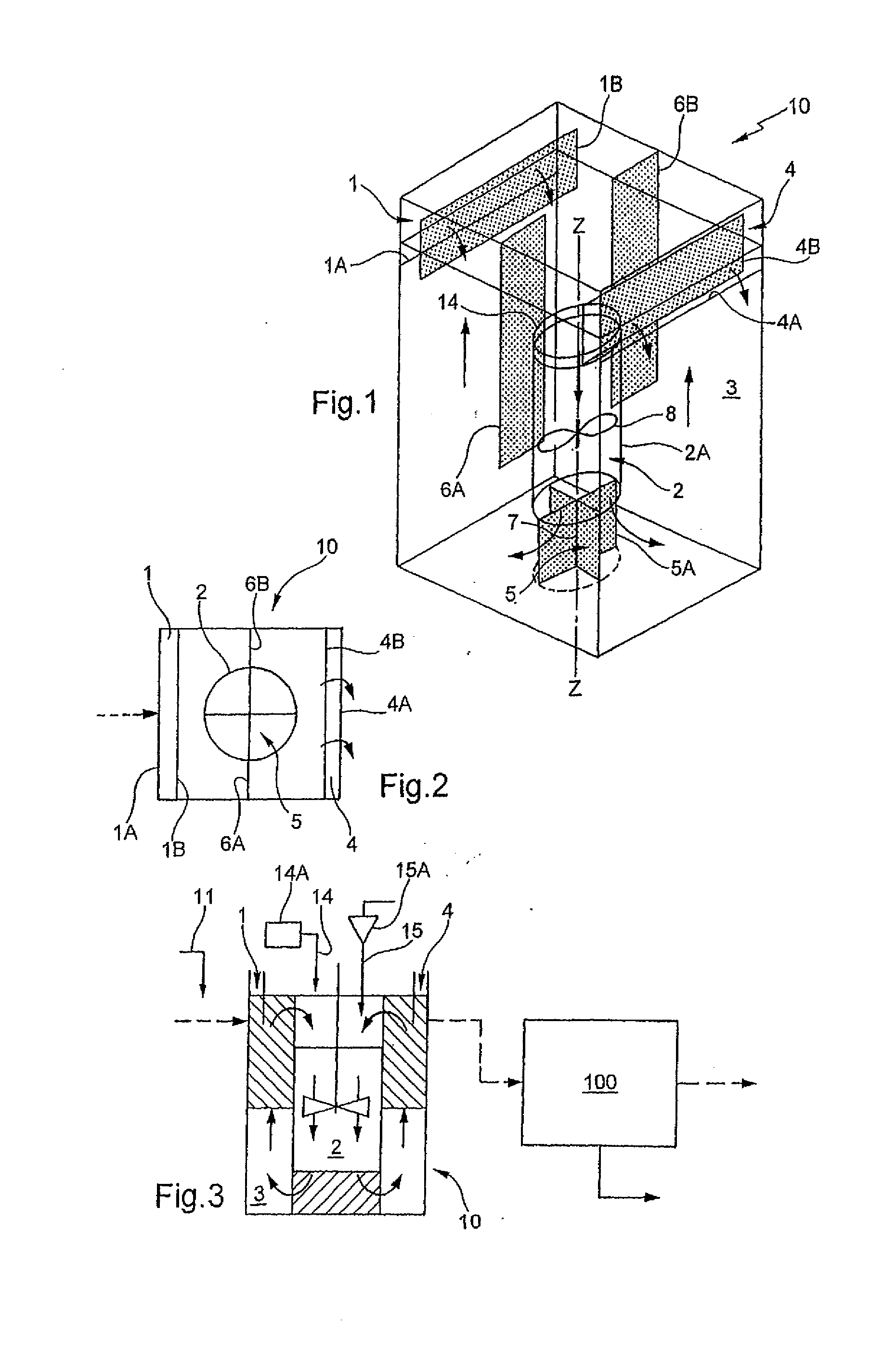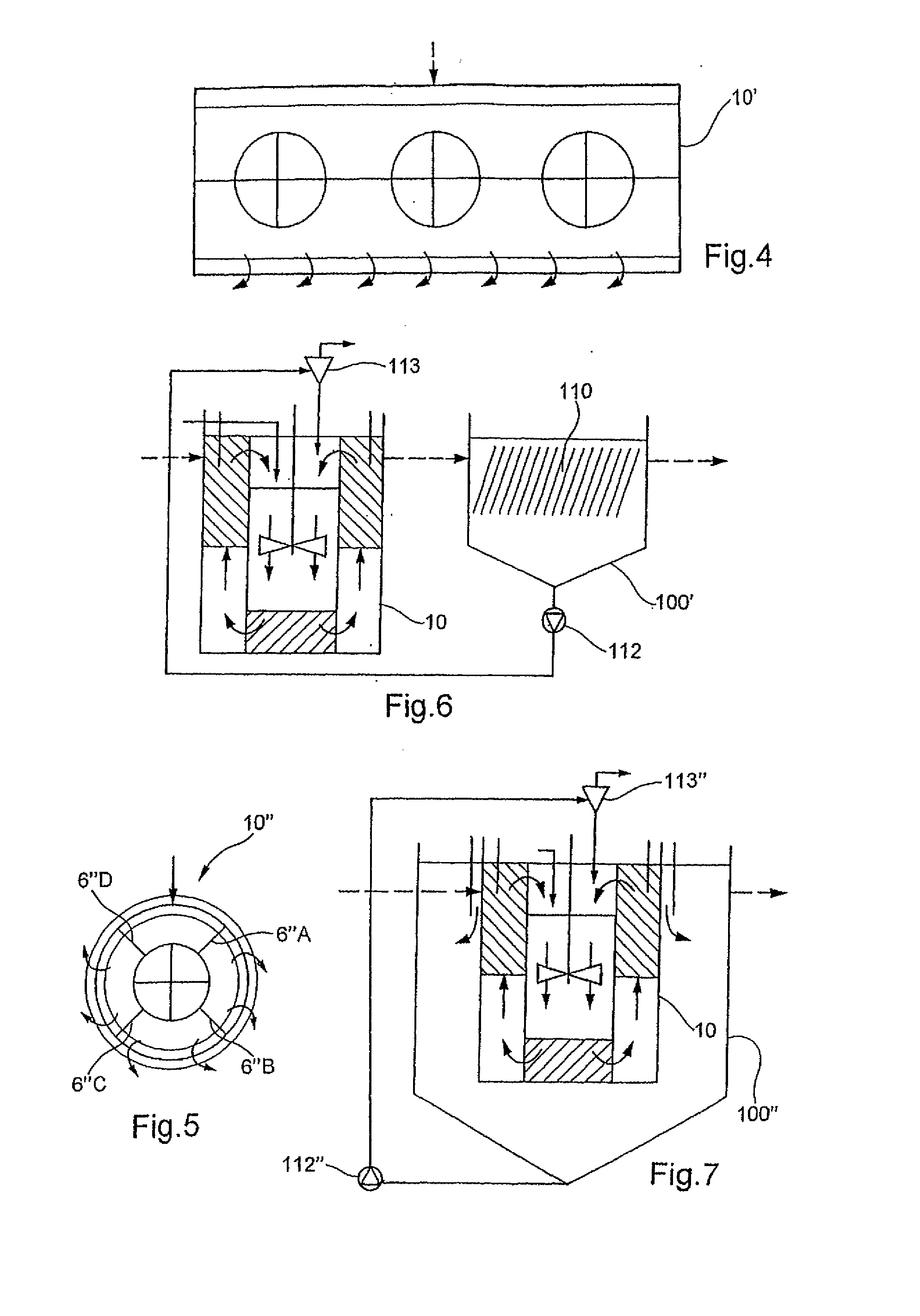Method and apparatus for treating wastewater
a technology for treating wastewater and reactors, applied in the direction of settling tank feed/discharge, water treatment compounds, sedimentation settling tanks, etc., can solve the problems of increasing the size of the reactor and/or the use of additional agitation power, increasing investment and operating costs, and difficult process control
- Summary
- Abstract
- Description
- Claims
- Application Information
AI Technical Summary
Benefits of technology
Problems solved by technology
Method used
Image
Examples
Embodiment Construction
[0090]Objects, features and advantages of the invention emerge from the following description, which is given by way of illustrative and nonlimiting example and with reference to the appended drawings, in which:
[0091]FIG. 1 is a diagrammatic perspective view of a preferred embodiment of a reactor of the invention,
[0092]FIG. 2 is a diagrammatic plan view of the reactor,
[0093]FIG. 3 is a diagram of a water treatment installation using the reactor shown in FIGS. 1 and 2,
[0094]FIG. 4 is a diagrammatic plan view of a reactor that is a variant of the reactor shown in FIGS. 1 and 2,
[0095]FIG. 5 is a diagrammatic plan view of a reactor that is also a variant of the reactor shown in FIGS. 1 and 2,
[0096]FIG. 6 is a diagram of one variant of the installation shown in FIG. 3, and
[0097]FIG. 7 is a diagram of another variant of the installation shown in FIG. 3.
REACTOR SHAPE
[0098]The reactor 10 shown in FIGS. 1 and 2 is of rectangular shape in order to facilitate connecting a plurality of reactors...
PUM
| Property | Measurement | Unit |
|---|---|---|
| particle size | aaaaa | aaaaa |
| length | aaaaa | aaaaa |
| diameter | aaaaa | aaaaa |
Abstract
Description
Claims
Application Information
 Login to View More
Login to View More - R&D
- Intellectual Property
- Life Sciences
- Materials
- Tech Scout
- Unparalleled Data Quality
- Higher Quality Content
- 60% Fewer Hallucinations
Browse by: Latest US Patents, China's latest patents, Technical Efficacy Thesaurus, Application Domain, Technology Topic, Popular Technical Reports.
© 2025 PatSnap. All rights reserved.Legal|Privacy policy|Modern Slavery Act Transparency Statement|Sitemap|About US| Contact US: help@patsnap.com



